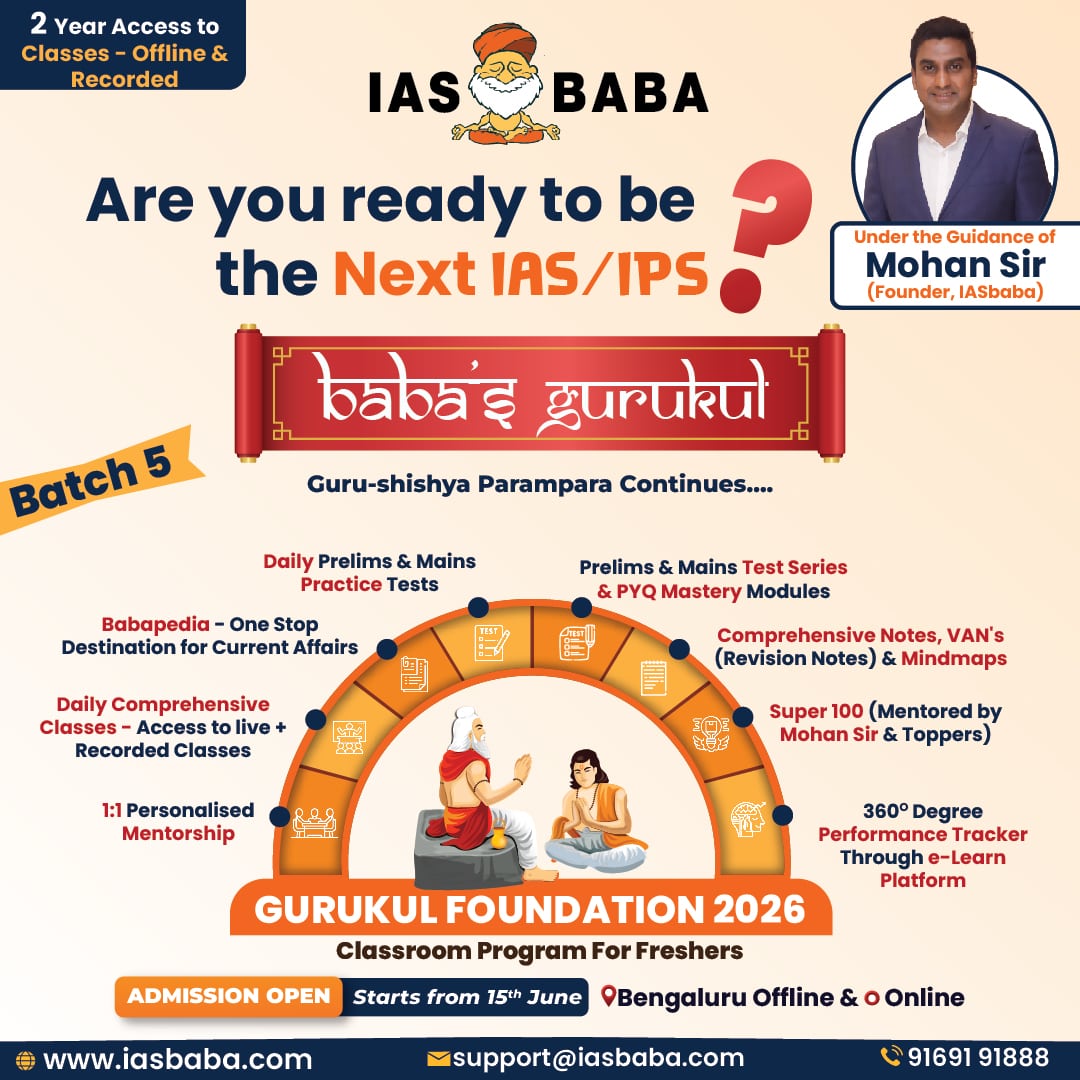IASbaba's Daily Current Affairs Analysis, IASbaba's Daily Current Affairs May 2016, National, UPSC
Archives
IASbaba’s Daily Current Affairs – 21st May, 2016
NATIONAL
TOPC: General Studies 2
- Government policies and interventions for development in various sectors and issues arising out of their design and implementation; Governance issues
- Welfare schemes for vulnerable sections of the population by the Centre and States and the performance of these schemes; mechanisms, laws, institutions and Bodies constituted for the protection and betterment of these vulnerable sections;
PAHAL—Direct Benefit Transfer Scheme for (LPG)
PAHAL is the first major programme in India that provides subsidies through DBT—with nearly 150 million registered beneficiaries, it is probably the world’s largest DBT programme ever.
Note:
- Accounts for only about 3.5% of the total annual flow of government subsidies
- The provision of around Rs.20, 000 crore for the scheme is about 8% of the total provision of Rs.250, 433 crore for subsidies in the 2016-17 Union budget
Lessons learned from PAHAL—
Targeting:
- The goal of the government in subsidy reform is targeting them effectively so that they flow only to the intended beneficiaries.
- Such targeting of subsidies is extremely problematic when the subsidy is embedded in the physical delivery of a product at a price that is below the open market price as this price gap—
- Distorts the market,
- Provides opportunities for arbitrage,
- Diverts supplies
- Leads to profiteering in the black market
- Thus, maintenance of an elaborate administrative apparatus is necessary to manage the rationing of subsidized commodities; but despite this, there exists problems like—
- Product adulteration,
- Leakages,
- Ghost ration cards
- Harassment of beneficiaries by the rationing bureaucracy
- Very often, the cost of maintaining this elaborate PDS bureaucracy is much higher than the amount of subsidy it is supposed to save by enforcing, unsuccessfully, the exclusion of this small group of non-poor consumers from access to subsidized commodities—Switching to DBT System would pave way for huge savings
Backbone of the DBT System—The Banking Network:
- Subsidies are transferred to beneficiaries directly through their bank accounts—the scheme will not work without a bank account
- Even post the Jan Dhan Yojana campaign, banking penetration among the target beneficiaries is still quite limited, especially in rural areas.
- Also, bank staff is reluctant to cooperate in opening accounts, especially unprofitable ‘zero balance’ accounts, for poor customers
Solution—
- Villages can be served through the new payments banks and banking correspondents (not viable to have a commercial bank branch in every village)
- Linking of Jan Dhan Yojana with Aadhaar, the unique biometric identification system, as Aadhaar is now backed by an Act of Parliament and is reported to have covered virtually the entire population—
- The intended beneficiary receives the money in his account
- Reduction in the government’s subsidy burden
- Effective solution to leakages and mis-targeting problems
- Linking Postal Account with Aadhaar
- The Post Bank accounts should be Aadhaar seeded so that various Government schemes for Direct Benefit Transfer could be rolled out through the Post Bank.
- Department should step up its efforts to ramp up its capabilities to book, process, transmit & deliver e-Commerce articles
- An aggressive awareness campaign is an urgent need not just for beneficiaries but even more so for front-line commercial bank staff—need to be made aware that the humble act of opening an account for poor beneficiaries is, in fact, a critical link in what could become best practice for the largest welfare delivery system in the world.
A consumer-friendly delivery system—
- Disincentive of travelling to other villages to fetch the LPG cylinders
- The initial outlay required for getting an LPG connection, by way of deposit, cost of a burner, regulator, etc.—
- To overcome this constraint, the Ujjwala Yojana scheme has been initiated to provide free or subsidized connections to some 50 million poor households over the next four years at a total cost of about Rs.8,000 crore.
- Switching from 15kg cylinders to 5kg cylinders in rural areas will also help ease the cash-flow constraint for these households by reducing the outlay required for each refill
Exclusion of the ‘rich’:
- The CEEW study estimates that the richest 15% of the population account for about 25% of the LPG consumer base.
- ‘Give It Up’ campaign— Only 6% of consumers actually gave up their subsidy claim—only 14% of the rich consumers actually ‘gave it up’ (This attitude thus, calls for their enforced exclusion from subsidy)
Distinction between subsidies and income transfers—
Subsidy: When a government meets a part of the cost of providing a good or service to a beneficiary
Transfer Payment: When a government provides income support to a beneficiary
Connecting the Dots:
- Comment on the relationship between Aadhaar, LPG and smokeless kitchen
- Discuss the need to conduct a comprehensive social audit and expenditure assessment of the market across different geographies and social segments to ascertain whether the intended benefits have indeed been achieved or not.
Refer:
http://iasbaba.com/2016/01/iasbabas-daily-current-affairs-8th-january-2016/
NATIONAL
TOPIC: General Studies 2
- Government policies and interventions for development in various sectors and issues arising out of their design and implementation
- Important aspects of governance, transparency and accountability and institutional and other measures
Right to Information (RTI) Act: Boon or Bane?
- The RTI Act has been the most empowering legislation for citizens
- It has initiated the vital task of redistributing power in a democratic framework
- In other words, the law gives citizens power to control and hold government responsible for their activities
- It protects everyone from being wrongly or inappropriately informed or misinformed.
Issue:
- However, this paradigm shift in the locus of power is not well received by some of the public functionaries. There have been consistent efforts by the powerful to denigrate the law.
- The latest attack on the legislation was witnessed recently in the Rajya Sabha, with several members of Parliament, across party lines, demanding amendments to the act.
Why there are demands for amendments to the RTI Act?
- Many MPs have alleged that the RTI is being widely misused
- It is used as a tool to blackmail public functionaries
- They argued that government servants are unable to take decisions objectively for fear of the RTI
- A large number of frivolous and vexatious RTI applications are being filed resulting in a negative impact on the efficiency of the government
- Some argued that many are using the RTI to ask questions on sensitive issues from the government such as national secrets related to missile programs and international relations.
- An extra burden to the authorities
(Note: These assertions, however, are not backed by data or evidence)
Is RTI really misused?
Two national studies on the implementation of the RTI was carried out by the RTI Assessment and Advocacy Group (RaaG) in collaboration with the National Campaign for Peoples’ Right to Information (NCPRI)
As part of the assessments, 20,000 RTI applications filed to different public authorities in the country were collected, of which detailed analysis of a randomly selected sample of 5000 applications was undertaken.
The result of these studies/assessments tell a completely different story:
- Less than 1 per cent of the RTI applications analysed pointed towards the misuse of the law in terms of frivolous or vexatious information requests.
- The majority of applicants sought basic information about decisions and action taken by the government, norms related to the functioning of public authorities and the use of public resources.
- In fact, the studies showed that close to 70 per cent of the RTI applications sought information that should either have been made public proactively or communicated to the applicant without needing to file an RTI application.
- The analysis also revealed that a little over 1 per cent applications were voluminous, in terms of requiring a lot of information, which could divert time of public servants.
- Again, a majority of the voluminous applications were asking for information that should have been disclosed proactively.
Key take away from the studies –
Clearly, the poor compliance by public authorities with statutory provisions related to proactive disclosure of information is forcing people to file applications for information that should be publicly available to them. Even a government-sponsored nation-wide study in 2009 did not find any evidence to flag misuse.
Is RTI data used as a tool to blackmail or harass anyone?
- As the above assessment shows, most of RTI applicants sought information that should either have been made public proactively or communicated to the applicant without needing to file an RTI application.
- It raises the question – In any case, how can objective government information, obtained under the RTI, be used to blackmail or harass anyone?
- On the other hand, if there is some wrongdoing, the RTI applicant would be rendering a service to the society by exposing it.
Is RTI compromising national security?
- Some MPs had claimed that anyone can use the RTI to ask questions on sensitive issues from the government such as national secrets related to missile programs and international relations, which would prejudicially affect the security of India.
- The above assertion that the RTI can be used to compromise national security is totally unfounded.
- Section 8 of the RTI Act spells out the restrictions to peoples’ right to information. It exempts disclosure of various categories of information, including information, which would prejudicially affect the security of India and its relations with a foreign state, and personal information, which has no bearing on public activity or interest.
Conclusion:
- The Right to Information Act 2005 is hailed as a revolution in India’s evolution as a democracy. It empowers the ordinary citizen who has hither-to been armed with only his vote, with the tools of information that propel government decisions.
- When the poorest of the poor put votes, elect their representatives and also pay taxes (indirect taxes), then why there is hesitation to be answerable to them?
- The RTI Act is premised on the idea that democracy requires an informed citizenry.
- Members of Parliament would be well advised to look at the evidence before mulling amendments to it.
Connecting the dots:
- There have been consistent efforts by the powerful to denigrate the Right to Information (RTI) Act. Do you agree? Give arguments in favour of your answer.
- Critically comment on the implementation and performance of the Right to Information (RTI) Act.
MUST READ
Days and nights in Kathmandu
Related Articles:
http://iasbaba.com/2015/09/iasbabas-daily-current-affairs-28th-29th-september-2015/
http://iasbaba.com/2015/10/iasbabas-daily-current-affairs-11th-12th-october-2015/
http://iasbaba.com/2015/08/iasbabas-daily-current-affairs-4th-august-2015/
It’s time to regulate the auto industry- The Global NCAP has highlighted that cars made in India are unsafe, and pointed out the casual approach of automakers towards improving quality
Currency wars, global growth top agenda at G7 meeting in Japan- Japan, which is hosting the two-day talks, is keen to win an endorsement for its position that fiscal stimulus is the way to kick-start the world economy
Criminal defamation survives: a blot on free speech- The criminal defamation judgement reiterates the apex court’s lukewarm commitment to free speech in recent times
Related Articles:
There’s no rule book for eradicating corruption- In post-Soviet states, some of the world’s most corrupt, bureaucracy is inherited from a time when cheating the state was a national pastime
Related Articles:
No Make in India impact visible yet in exports-Manufacturing exports contracted in 2015-16 for the first time in six years
Finally, there’s a thaw in relations – Indian industry should be quick off the block to benefit from Modi’s visit to Iran and capitalise on the opportunity
Related Articles:
http://iasbaba.com/2016/01/iasbabas-daily-current-affairs-19th-january-2016/
http://iasbaba.com/2015/07/iasbabas-daily-current-affairs-15th-july-2015/
http://iasbaba.com/2015/07/iasbabas-daily-current-affairs-2nd-july-2015/








